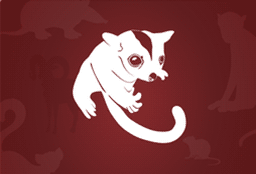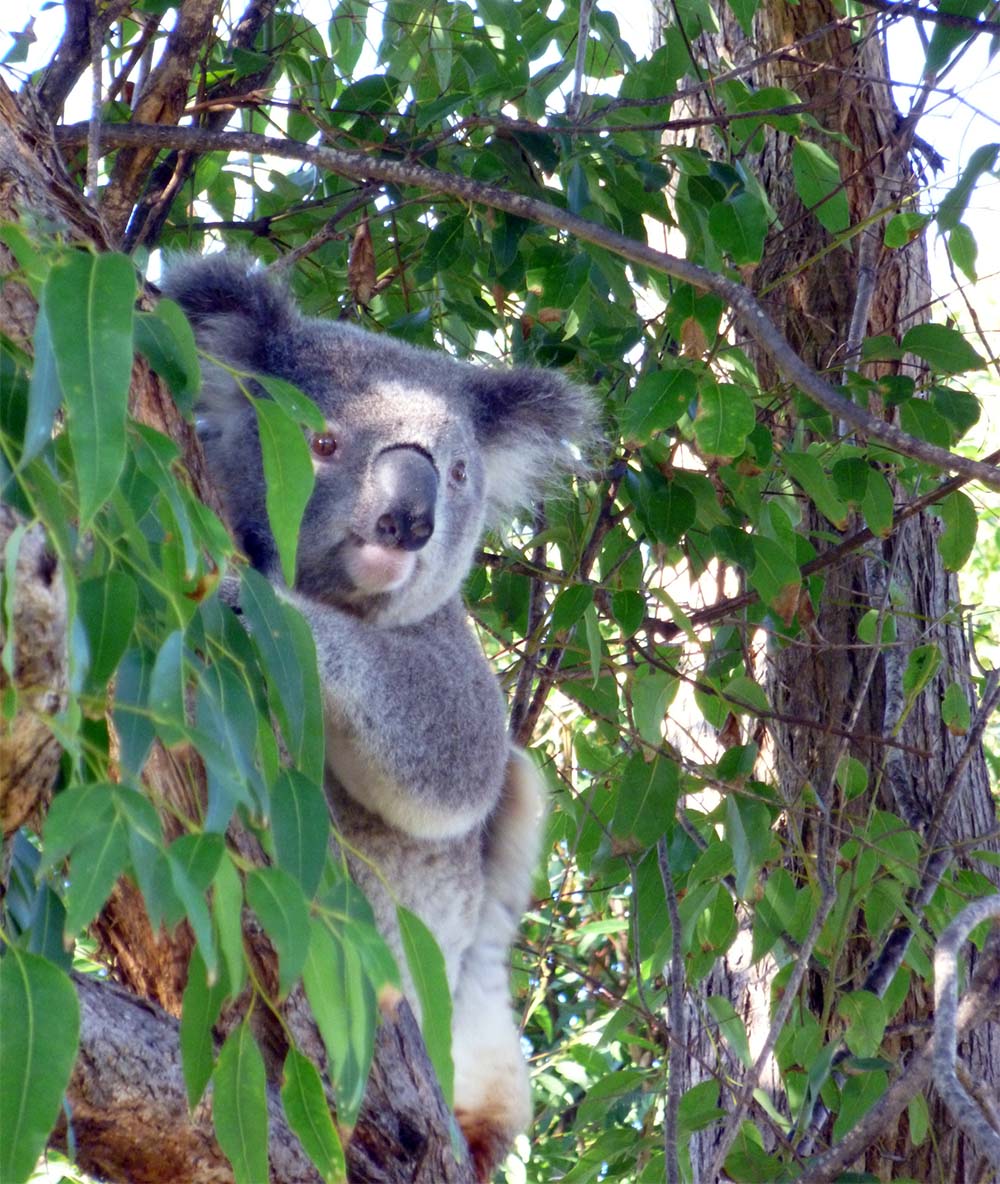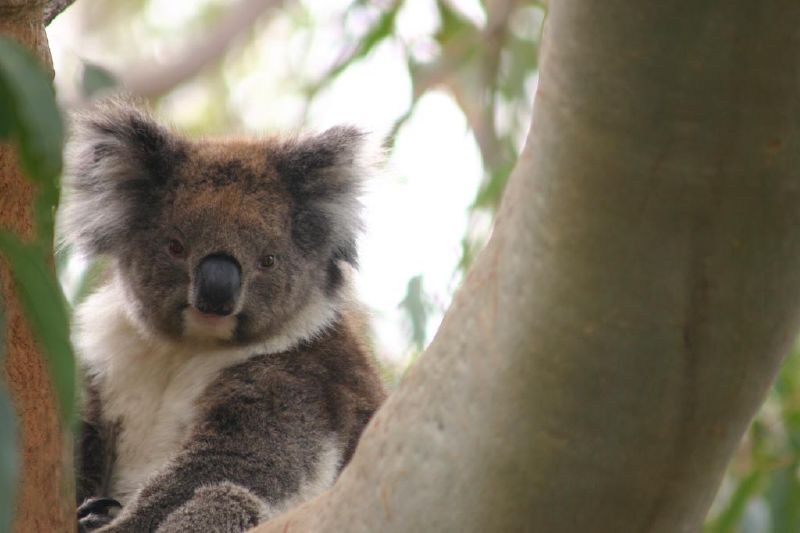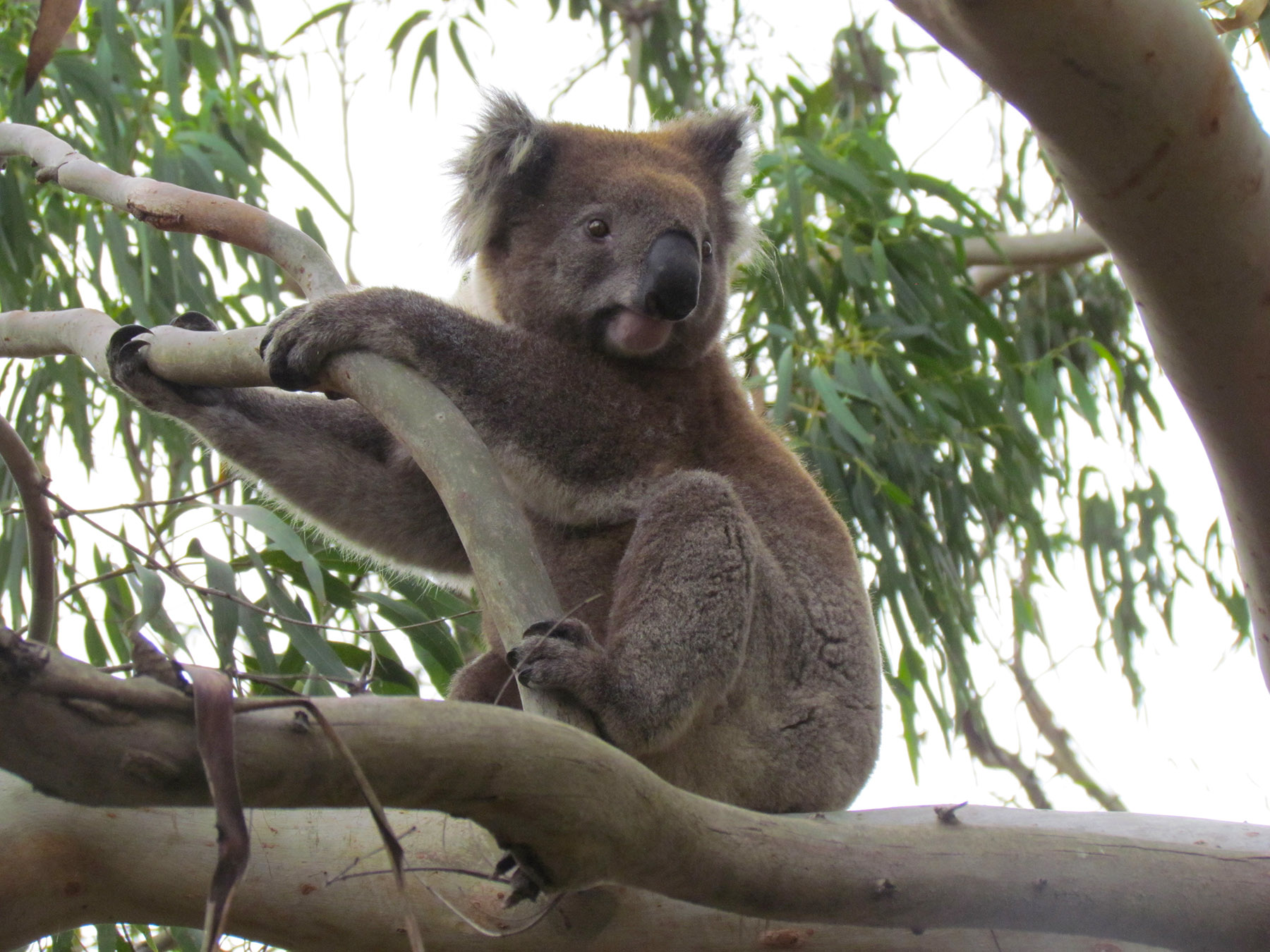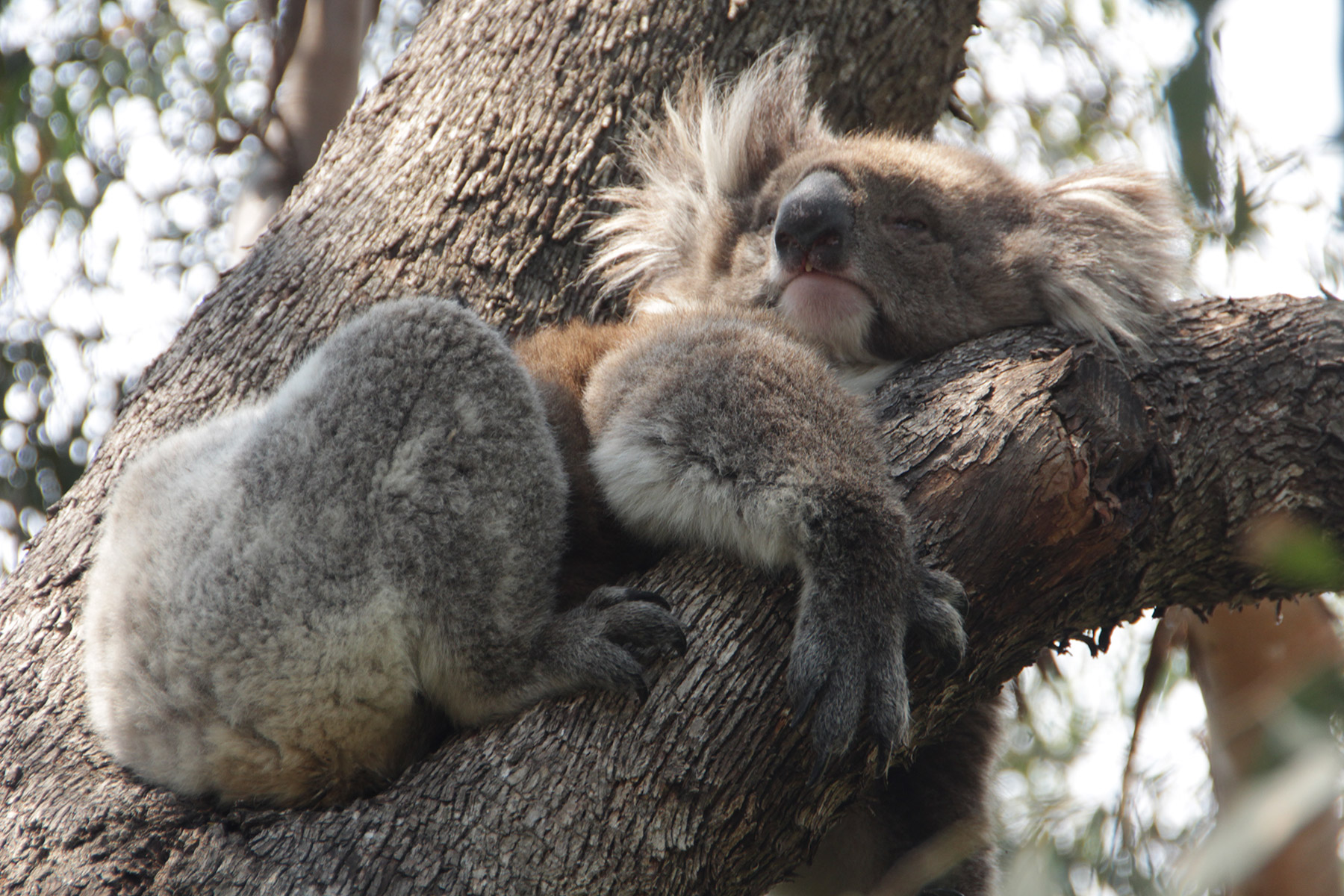Behaviour
Diet
Feeds almost exclusively on eucalyptus leaves (gum trees) consuming upwards of 400g of leaves in a day, in the later hours of the day between 5 pm - 12 am. They will tend to feed in 20 minute increments and on average move between trees once a day, generally feeding in every tree that they occupy.
Breeding
Breeding season is usually August-February. They reach sexual maturity around 2 years old. Generally a solitary animal but in areas of high density there is a male dominance hierarchy. Female gestation is about 35 days with females giving birth to one small young. Joeys develop in their mother's pouches, fully emerging at nine months and becoming independent at one year.
Field Guide
Improve your identification skills. Download your Koala field guide here!

